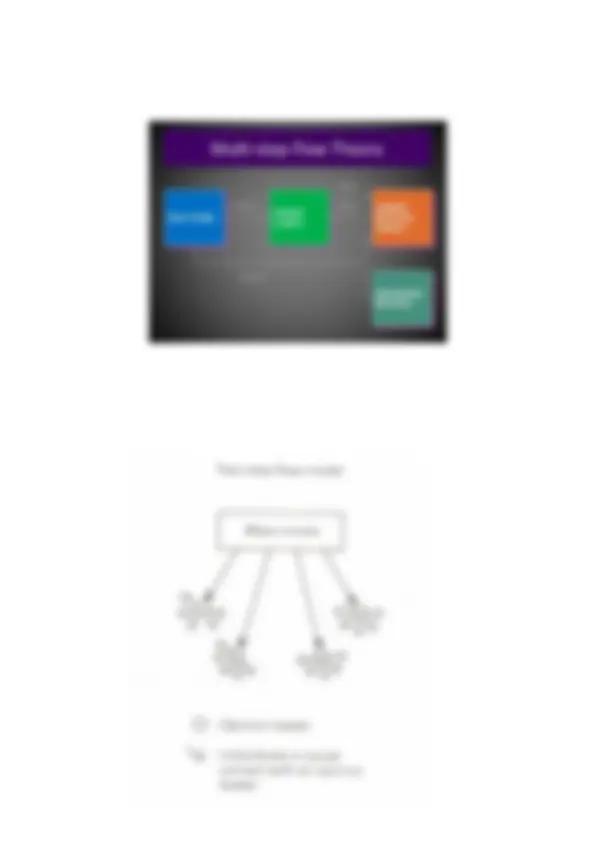




Study with the several resources on Docsity

Earn points by helping other students or get them with a premium plan


Prepare for your exams
Study with the several resources on Docsity

Earn points to download
Earn points by helping other students or get them with a premium plan
Community
Ask the community for help and clear up your study doubts
Discover the best universities in your country according to Docsity users
Free resources
Download our free guides on studying techniques, anxiety management strategies, and thesis advice from Docsity tutors
The two-step flow theory, introduced by paul lazarsfeld, bernard berelson, and hazel gaudet, suggests that people are more influenced by opinion leaders than the media itself. Opinion leaders absorb information from the media and pass it on to the less active population, who have strong political beliefs and pay closer attention to the media. This theory challenges the hypodermic needle theory and has improved our understanding of how mass media influence decision-making.
What you will learn
Typology: Study notes
1 / 4

This page cannot be seen from the preview
Don't miss anything!



What is it and how does it work? It shows that the media itself isn’t very powerful in influencing people and it argues that people are more influenced by people that they know and see on a daily basis and it suggests that personal influence shapes people’s attitudes. However, one group of people are singled out and show that they have a particular influence who are referred to as ‘opinion leaders’. These are those whose views and ideas are respected and seen as being important. The ‘opinion leaders’ absorbed information from the media and passed it on to the less active population. The ‘opinion leaders’ have strong political beliefs so they pay closer attention to the media. These leaders aren’t necessarily rich or powerful as they can be from any background. Theorists involved. It was first introduced by Paul Lazarsfeld, Bernard Berelson and Hazel Gaudet in The People’s Choice. This theory can be seen with elections, TV, Radio and Magazines. A good example of this theory in a film would be Mean Girls. Developments of the theory A study in 1944 focused on the process of decision making during a Presidential election campaign. The researchers expected to find that the direct influence of media messages on voting intentions. However, they discovered that informal personal contacts were more prominent than the exposure to radio or newspapers as sources of influence on voting behavior. Oppositional arguments This is opposite to the hypodermic needle theory where the audience are described as being ‘passive’ it suggests that the audience are affected to what they consume which contrasts two step theory. It helps to explain why certain media campaigns may have failed to alter audience attitudes. This theory has improved the understanding of how the mass media influence decision making. This theory was discredited by the multi-step flow theory of mass communication or diffusion of innovation theory. Diffusion of innovation theory predicts that media as well as interpersonal contacts provide information and influence opinion and judgment. E.M. Rogers (1995) argued that it consists of four stages: invention, diffusion (or communication) through the social system, time and consequences. The information flows through networks. The nature of networks and the roles opinion leaders play in them determine the likelihood that the innovation will be adopted. Innovation diffusion research has attempted to explain the variables that influence how and why users adopt a new information medium, such as the Internet. Opinion leaders exert influence on audience behavior via their personal contact, but additional intermediaries called change agents and gatekeepers are also included in the process of diffusion.